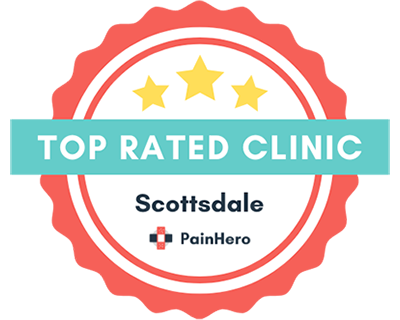Golf is a sport that requires a combination of physical and mental skills to perform at your best. One of the most important physical skills in golf is the golf swing. A good golf swing can make a huge difference in your game, allowing you to hit the ball farther and more accurately. However, many golfers struggle with their swings, often due to physical limitations or injuries. This is where physical therapy comes in. In this blog post, we’ll explore the role of physical therapy in improving your golf swing, including the basics of golf swing, the benefits of physical therapy, key areas to focus on, and the importance of seeking professional help. Whether you’re a beginner or a seasoned pro, physical therapy can help you achieve your best swing and take your golf game to the next level. In this post, we’ll delve into the ways in which physical therapy can benefit golfers and help them optimize their golf swings. We’ll also provide some helpful tips for finding a qualified physical therapist and working with them to achieve your goals. So, if you’re looking to improve your golf swing and take your game to the next level, read on to find out how physical therapy can help.
In this article:
3 Main Roles In the Golf Performance
The golf performance field is a growing area of expertise that is dedicated to helping golfers improve their game through a combination of physical, mental, and technical training. Within this field, there are three major roles that work together to help golfers optimize their performance: physical therapy, strength and conditioning, and swing coaching
Strength and Conditioning Specialist ️♀️
Strength and conditioning is another important aspect of golf performance as it helps golfers improve their overall physical fitness, including strength, endurance, and mobility. Strength and conditioning coaches work with golfers to create customized workout plans that target their specific needs. By improving physical fitness, golfers can achieve a more stable and powerful swing, leading to greater accuracy and distance.
Swing Coach ️♂️
Swing coaching is the third major role in the golf performance field. Swing coaches work with golfers to help them improve their swing technique and make adjustments to optimize their performance. By analyzing golfers’ swings, swing coaches can identify areas for improvement, provide feedback, and develop customized plans to help golfers achieve their goals.
Physical Therapists ⚕️
Physical therapy is a crucial aspect of golf performance as it helps golfers overcome injuries, improve flexibility, and prevent future injuries. Physical therapists work with golfers to assess their physical limitations, create customized treatment plans, and provide exercises to help them improve their golf swing mechanics. By addressing physical limitations, physical therapy can help golfers improve their swing consistency, accuracy, and power.
How Physical Therapy can Improve Your Golf Swing
Physical therapy can play a significant role in improving a golfer’s swing. By addressing physical limitations, physical therapy can help golfers achieve better swing mechanics, leading to improved consistency, accuracy, and power. Some of the ways in which physical therapy can improve golf swing include:
Comprehensive Evaluation
Before beginning any physical therapy treatment for golf, it’s important to undergo a comprehensive evaluation. This evaluation helps identify any physical limitations or injuries that may be affecting your golf swing and allows the physical therapist to create a customized treatment plan to address your specific needs. Here are some of the key elements of a comprehensive evaluation:
-
Medical history: Your physical therapist will review your medical history to identify any underlying medical conditions that may be affecting your golf swing.
-
Golf swing analysis: Your physical therapist will analyze your golf swing to identify any areas of weakness or limitations in your mechanics.
-
Physical assessment: Your physical therapist will conduct a physical assessment to evaluate your flexibility, strength, balance, and coordination.
-
Treatment plan: Based on the results of the evaluation, your physical therapist will create a customized treatment plan to address your specific needs and goals.
A comprehensive evaluation is significant because it allows your physical therapist to create a tailored treatment plan that addresses your unique needs and goals. By identifying any physical limitations or injuries, the physical therapist can develop a plan that not only improves your golf swing but also reduces the risk of future injuries.
In addition, a comprehensive evaluation can help you understand the underlying causes of any limitations or injuries you may be experiencing. By gaining a better understanding of the root causes of your physical limitations, you can take steps to address them and improve your overall health and wellness.
Individualized Plan
Every golfer is unique, with their own physical strengths, limitations, and injury history. That’s why it’s crucial to create an individualized physical therapy plan for improving golf swing, based on the findings of a comprehensive evaluation. Here’s why:
-
Personalized treatment: An individualized plan ensures that each golfer receives personalized treatment that addresses their specific needs and goals. By tailoring the treatment plan to the golfer’s unique physical limitations and injuries, physical therapy can be more effective in improving golf swing mechanics.
-
Improved results: By focusing on the specific physical limitations that are affecting a golfer’s swing, an individualized plan can lead to improved results in a shorter amount of time.
-
Injury prevention: An individualized plan can also help prevent future injuries by addressing any underlying physical limitations or weaknesses that may be contributing to injury risk.
-
Motivation: An individualized plan can help keep golfers motivated to continue with their physical therapy program. When golfers see tangible results from their treatment plan, they’re more likely to stick with it and continue to improve.
The importance of an individualized plan cannot be overstated. It’s important to note that every individual is different, and physical therapy should be customized to meet each golfer’s unique needs and goals. This is why it’s crucial to base the treatment plan on the findings of a comprehensive evaluation.
Summary
Golf is a sport that requires physical and mental skills to perform at your best, and the golf swing is one of the most important physical skills in golf. However, many golfers struggle with their swings due to physical limitations or injuries. This is where physical therapy comes in.
Physical therapy can play a significant role in improving a golfer’s swing by addressing physical limitations and injuries, leading to improved consistency, accuracy, and power. By improving flexibility, strength, and posture, physical therapy can help golfers achieve better swing mechanics and overall performance, prevent future injuries, and promote overall health and wellness.
A comprehensive evaluation is crucial before beginning any physical therapy treatment for golf swing to identify any physical limitations or injuries and create a customized treatment plan to address the golfer’s specific needs and goals. An individualized plan is essential to tailoring physical therapy to each golfer’s unique needs and goals, leading to improved results and injury prevention.
Additional resources such as the Titleist Performance Institute, Golf Digest, American Physical Therapy Association, Golf Fitness Magazine, and Golf Channel Academy offer a variety of resources to help golfers deepen their understanding of physical therapy’s role in improving golf swing and discover new ways to improve their golf game.
By working with physical therapists and utilizing these resources, golfers can take their golf game to the next level by improving their swing mechanics, preventing injuries, and optimizing their overall performance.








